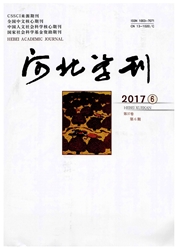
欢迎您!东篱公司
退出

 中文摘要:
中文摘要:
道武帝天兴元年(398年),北魏开始实行迎气祭祀礼。这一礼仪属于北魏中原系统的祭典。北魏统治者实行迎气祭祀礼,是与当时“顺时气”的施政方略结合在一起的,因此,这一祭礼在国家祭典中占有重要的地位。北魏迎气祭祀礼神祇和祭坛的设置,主要承袭以《月令》为基础而制定的传统中原汉族王朝迎气祭祀礼,并且祭祀的主要仪式也与传统迎气祭祀礼没有多少差别。由于北魏举行迎气祭祀礼,是“顺时气”布政措施的体现,故对这一礼仪所具有的社会功能不可低估。
 英文摘要:
英文摘要:
In 398, the Northern Wei Dynasty began to carry out the sacrificial rites of welcoming the sea- sons which belonged to the rites of Central China. This rite occupied an important position for it was closely related with the administrative strategy. Besides it, this rite was almost the same with that of the Han nationality in Central China, so it played an important role in the social function.
 同期刊论文项目
同期刊论文项目
 同项目期刊论文
同项目期刊论文
 期刊信息
期刊信息
